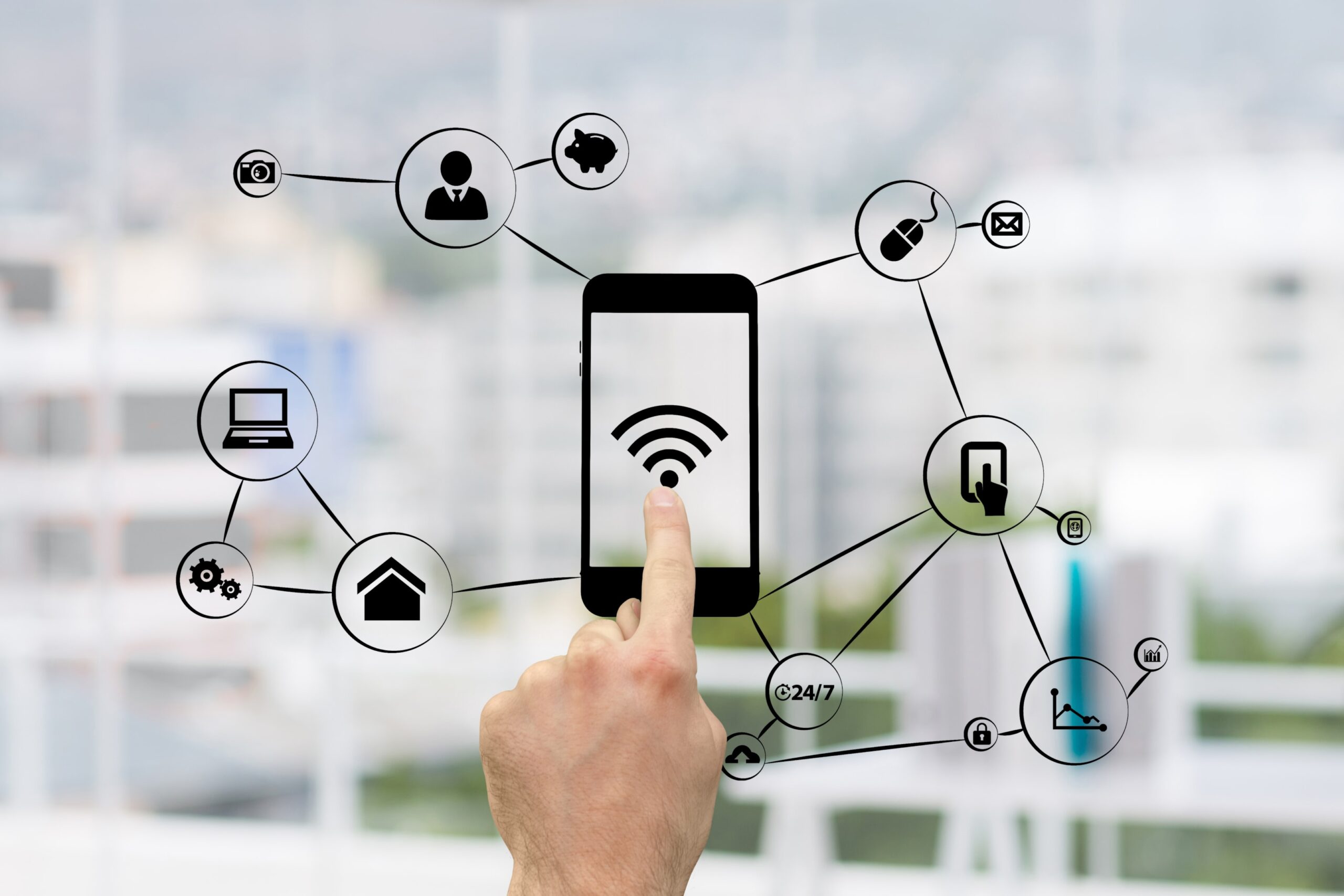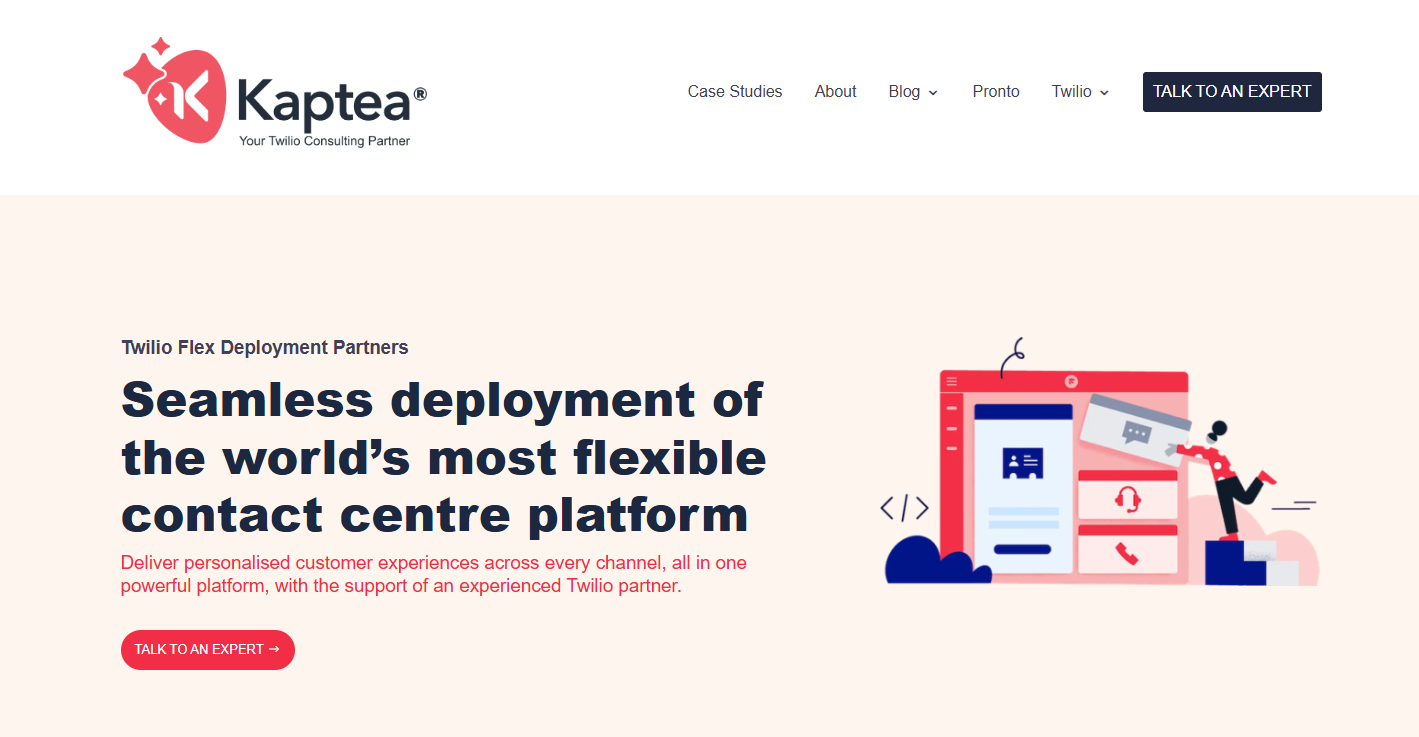
Nearly 89% of businesses are expected to compete primarily on customer experience (CX), surpassing traditional factors like product and price. That means how you interact with customers matters more than what you sell.People expect personalized, consistent service across email, chat, phone, and social. They don’t want to repeat themselves or switch channels just to get answers.Many companies still rely on disconnected tools and scattered data. That creates delays and lost opportunities.You can change that. By optimizing your omnichannel engagement strategy, you make every interaction faster and more connected.In this guide, you’ll learn what makes omnichannel engagement work, where teams get stuck, and how tools like Twilio Flex can help you pull it all together.
Omnichannel means more than being available on multiple platforms. It focuses on creating a connected experience across all channels, including email, chat, phone, text, and social media. The goal is to make sure customers can move from one channel to another without starting over.Instead of treating each touchpoint as a separate interaction, an omnichannel strategy brings them together. A conversation that begins on live chat can continue through email or phone, with full context carried over. This helps teams respond faster and makes customers feel recognized and understood.An effective omnichannel customer engagement platform supports a smoother customer journey and meets rising customer expectations. It also strengthens the experience across multiple touchpoints, from first contact to post-sale follow-up.
Before adjusting how your team handles communication, look at what connected engagement can do. When your systems work together, the experience improves for customers and employees.People expect quick replies and simple interactions. They want to be recognized and remembered. When those needs are met, trust builds faster, and service feels more natural.Your team benefits, too. They get full context without toggling between tools. This reduces confusion and saves time, whether they work in the office or remotely.Once your customer communication channels align, it becomes easier to serve more customers, grow your team, and respond to changing demands.
An effective omnichannel engagement can bring:
Recent data shows that cross-channel campaigns drive 250% more purchases and lead to a 13% increase in average order value compared to single-channel approaches.
If your channels don’t connect, your customer experience will always hit a wall. Many businesses use email, chat, phone, and social, but treat each one like a separate system. That’s where problems begin.Disconnected tools create confusion. A customer might call, then follow up by email, only to repeat everything. Agents waste time digging for context, and customers lose patience fast.This kind of setup also makes it harder to track performance. Data ends up scattered across platforms. Voice call logs live in one place, chat histories in another, and email threads somewhere else.That leads to:
Security and privacy risks grow, too. Keeping data across several tools makes it harder to stay compliant with regulations and protect customer information.It’s not just about the tech. It’s about the experience people have when they contact you. When that experience feels broken, customer engagement declines.But you can turn that around with a successful omnichannel customer engagement.

If your systems don't talk to each other, you're not getting the full picture, and neither are your customers.When you optimize omnichannel engagement, every interaction feels like part of the same conversation. Whether someone reaches out by text, phone, or chat, your team has the full context. That means fewer delays and fewer missed signals.To get there, focus on a few core elements:
Customer satisfaction improves when these pieces work together to support a personalized customer experience.
You don’t need to rebuild everything from scratch. Small changes can lead to big results, especially when you focus on the right areas.Here are some practical strategies to help you create more connected, responsive customer experiences.
Visualize every step your customers take, from initial contact to post-purchase interactions. These usually reveal weak spots in how customer segments are served. For instance, if many customers leave items in their carts while using mobile devices, it could suggest that the mobile experience needs to be easier to use.
Consolidate information from various customer touchpoints into a single system. This gives your team a full view of customer behavior and lets you support different customer segments better.For example, if a customer previously purchased eco-friendly products, you can tailor future recommendations to align with their values.
Utilize centralized data to customize messages based on individual customer preferences. Personalized emails have been shown to increase transaction rates by up to 6 times compared to non-personalized ones. This approach demonstrates attentiveness and fosters customer loyalty.
Provide your customer service team with platforms that offer insights into customer interactions across multiple channels. This reduces response times and enhances service quality. Companies with strong omnichannel strategies retain an average of 89% of their customers, compared to 33% for those with weak strategies.
Automate routine tasks like order confirmations and follow-up surveys. This ensures timely communication and allows your team to focus on more complex customer needs. However, maintain a balance to preserve the human touch in customer interactions.
Analyze customer data regularly. Track what’s working, what’s not, and where attention is needed across teams and tools. This data-driven approach enables continuous improvement of your omnichannel strategy.For instance, if social media inquiries have longer response times, allocating more resources to that channel can enhance overall satisfaction.
Twilio Flex gives your team the tools to deliver a connected customer journey. It’s a cloud-based contact center platform built for flexibility. Whether your customers reach out through chat, voice, SMS, or email, Flex keeps everything aligned across channels.Agents can work from one screen. Supervisors get a full view of team activity. And customers get a faster, more personal experience every time they interact.Here’s how Twilio Flex supports a strong omnichannel customer engagement strategy:
Every incoming interaction is matched to customer data in your customer relationship management (CRM). That means returning customers can be prioritized based on their history, language, product, or recent campaigns.The result: customers reach the right person faster, and agents get context right from the start.
Sales, support, and operations don’t all work the same way. Twilio Flex lets you build user interfaces that fit how each team works best.You can update routing, workflows, or layout as your needs shift without rebuilding your entire setup.
Twilio Flex gives managers visibility into what’s happening in the contact center.You can track agent performance, monitor conversations, and build reports using simple drag-and-drop tools. It also integrates with platforms like Power BI and Salesforce Tableau for deeper insights.Twilio Flex brings everything together so your team can deliver an enhanced customer experience. It helps your team stay connected, responsive, and ready to exceed customer expectations.

Launching an omnichannel strategy requires the right setup, guided by experts who understand how to align tools with real business needs.Twilio Flex is built for customization. It supports customer conversations across multiple channels and gives teams the flexibility to create the experience they want. But configuring it properly takes more than plug-and-play.Getting the most out of Flex means connecting it to the customer journey, internal workflows, and team goals.Kaptea has supported many businesses through this process. That experience helps avoid common setup issues and leads to faster, more effective results.Here’s what to expect from working with Kaptea:
Thinking about using Twilio Flex to simplify omnichannel engagement in your contact center? Connect with a Twilio expert at Kaptea to get started!
Omnichannel engagement is the ability to interact with customers across different channels, such as phone, email, chat, and social media, while keeping the experience connected. The goal is to make each interaction feel like part of one ongoing conversation.
The four C's often refer to consistency, context, continuity, and convenience. These help create a unified experience across all customer touchpoints.
Omnichannel optimization means improving how your systems, teams, and channels work together. It focuses on removing friction, connecting data, and making customer interactions faster and more helpful.
The four pillars of omnichannel marketing usually include people, process, technology, and data. These elements support a customer engagement strategy that feels consistent and responsive across multiple channels.